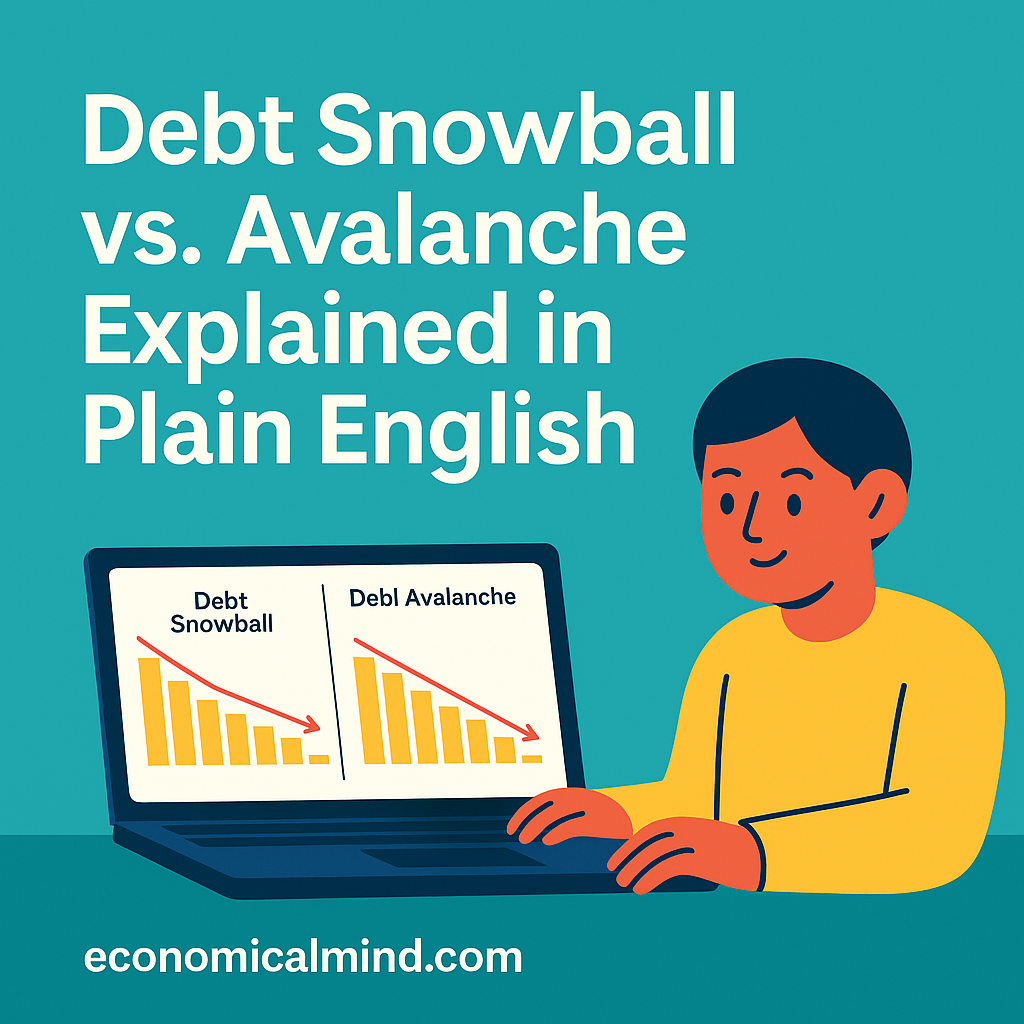
Why Choosing a Debt Strategy Matters
If you’re juggling multiple debts — credit cards, student loans, car payments — it can feel impossible to get ahead.
That’s where payoff strategies come in. Two of the most popular methods are the debt snowball and the debt avalanche.
Both help you pay off debt faster, save money on interest, and build momentum — but they work differently.
Let’s break them down in plain English.
Step 1: What Is the Debt Snowball Method?
The debt snowball method focuses on emotional wins first.
You list all your debts from smallest to largest balance, ignoring interest rates for now.
Then:
- Make minimum payments on everything.
- Throw any extra money at your smallest debt first.
- Once it’s paid off, roll that payment into the next smallest debt — and so on.
As you knock out small balances, your motivation snowballs.
Example:
- Credit card A: $500 balance
- Credit card B: $2,000
- Student loan: $8,000
You’d pay off Card A first, then roll that payment into Card B, then the loan.
Each win gives you energy to keep going.
Best for: People who need quick wins and motivation to stay consistent.
Step 2: What Is the Debt Avalanche Method?
The debt avalanche method focuses on math efficiency.
You list all your debts by interest rate, highest to lowest.
Then:
- Make minimum payments on everything.
- Pay as much extra as possible on the highest interest rate debt first.
- Once that’s gone, move to the next highest rate.
This method saves the most money in the long run because you eliminate high-interest debt faster.
Example:
- Credit card A: 22% APR
- Credit card B: 12% APR
- Student loan: 5% APR
You’d attack Card A first, even if it’s not the smallest.
Best for: People motivated by saving money and reaching debt freedom sooner.
Step 3: Compare the Two Side by Side
| Method | Focus | Main Benefit | Best For |
|---|---|---|---|
| Snowball | Smallest balance first | Builds motivation and momentum | Emotional payoff seekers |
| Avalanche | Highest interest rate first | Saves more on interest | Analytical or disciplined savers |
Both methods work, but success depends on your mindset.
If motivation keeps you going, choose snowball. If math keeps you focused, choose avalanche.
Step 4: How to Start (With Either Method)
- List all debts — balance, interest rate, and minimum payment.
- Pick your method — snowball (smallest first) or avalanche (highest interest first).
- Budget extra funds each month toward your target debt.
- Automate minimum payments to avoid late fees.
- Stay consistent — progress matters more than perfection.
Even small extra payments — like $50 per month — can shave years off your payoff timeline.
Step 5: Use Tools and Apps to Help
If you like visual motivation, apps make tracking progress easy:
- Undebt.it — lets you compare both methods side-by-side.
- Debt Payoff Planner — shows how long each approach takes.
- YNAB (You Need a Budget) — great for allocating extra money toward debt.
You can also use simple spreadsheets or free calculators online to model your payoff plan.
Step 6: Combine Motivation and Math
You don’t have to pick just one method forever. Many people use a hybrid approach:
- Start with a snowball to build confidence.
- Switch to avalanche once you’re in a steady rhythm.
The goal isn’t perfection — it’s progress. As long as you’re paying more than the minimums, you’re moving forward.
Bonus Tip: Avoid New Debt While Paying Off Old
It’s tempting to celebrate progress by spending — but that slows you down.
While paying off debt, try to:
- Pause new credit card use.
- Set up a small emergency fund ($500–$1,000) to avoid re-borrowing.
- Celebrate milestones with non-spending rewards like a day off or a favorite activity.
Momentum feels better than more bills.
Final Thoughts
Whether you pick the debt snowball or the debt avalanche, the best strategy is the one you’ll stick with.
Snowball builds motivation; avalanche saves money — but both lead to the same destination: freedom from debt.
Start today, stay consistent, and watch your balances fall one by one.
